Photos
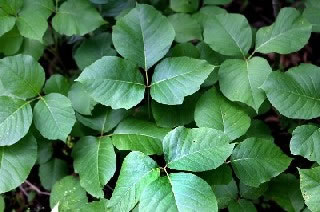
Poison Ivy Plant (Example 1)
The leaves appear in groups of three.
Poison ivy grows as a small plant, as a bush, or as a vine.
Source: Wikimedia Commons
Permission is granted to copy, distribute and/or modify this document under the terms of the GNU Free Documentation License. This is a public domain image file from Wikimedia Commons. Wikimedia is a freely licensed media repository.
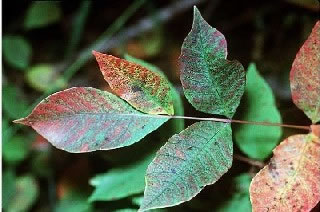
Poison Sumac Plant
Poison sumac can have groups of 6-12 leaves. Each stem has leaves growing across (parallel) from each other. Young plants are red or red-brown. As a poison sumac plant grows older, the leaves will become brown or grey.
Source: Wikimedia Commons
Permission is granted to copy, distribute and/or modify this document under the terms of the GNU Free Documentation License. This is a public domain image file from Wikimedia Commons. Wikimedia is a freely licensed media repository.
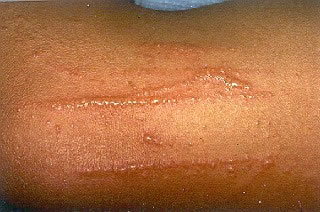
Poison Ivy Rash on Forearm
The oil from the plant leaves irritates the skin.
The redness and blistering from the rash often appears in streaks or lines, because the leaf brushes across the body in a line as a person walks past.
Source: Self Care Decisions, LLC
Used with Permission from Schmitt Pediatric Guidelines LLC.
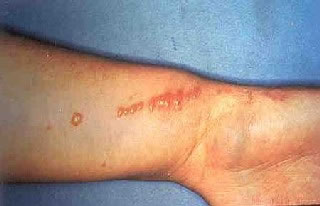
Poison Ivy Rash on Wrist
The oil from the plant leaves irritates the skin.
The redness and blistering from the rash is often arranged in streaks or lines, because the leaf brushes across the body in a line as a person walks past.
Source: Self Care Decisions, LLC
Used with Permission from Schmitt Pediatric Guidelines LLC.
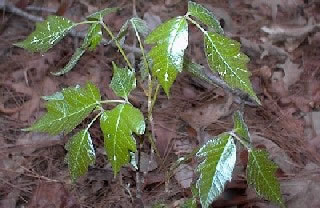
Poison Oak Plant
Poison oak can grow on a tree or a vine. The leaves look wavy and grow in groups of threes.
Source: Wikimedia Commons
Permission is granted to copy, distribute and/or modify this document under the terms of the GNU Free Documentation License. This is a public domain image file from Wikimedia Commons. Wikimedia is a freely licensed media repository.